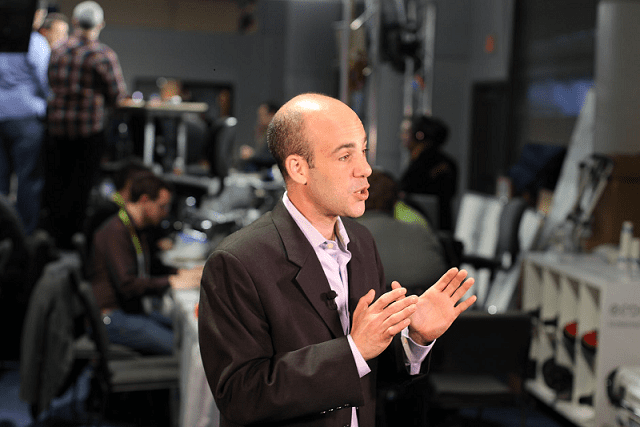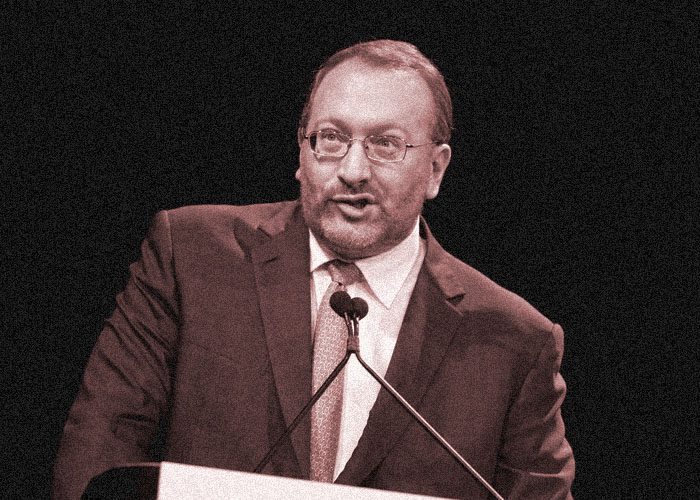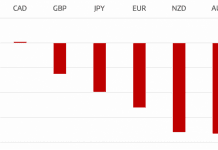Being a journalist has many great advantages; journalists always know updates about a variety of topics. This makes them very knowledgeable and interesting to talk to. They can also inform, educate, as well as change and shape the opinion of the masses. Using their voices to tell inspiring and impactful stories, and having the chance to be a part of and record history is impressive to say the least.
However, journalism is an extremely challenging job. Journalists often have to work under strict deadlines and are always pressured to find exciting stories and be the first to report them. On top of that, they must ensure that these stories or news aren’t based on rumors so that they can remain credible sources. Inaccuracy can eventually weaken the source’s reputation, which is why it must be avoided. It can be very hard to maintain quality and guarantee the accuracy of their story, especially when working quickly. In case you ever wondered how they do it, here’s how journalists write news so fast.
Finding News
The Process of Journalism
When reporters find news, they have to be very quick to report it. They also need to make sure that the news will make a good story, and that it is worth reporting. The process of journalism consists of six steps. First off, journalists scope a certain field or subject, then they relay the information to more people; afterward, they respond to and then attend news events, and lastly, they investigate the story. These steps help them plan out their story and ensure its validity, value, and credibility. Part of their investigation includes other sources to avoid unintentionally copying them.
Finding Leads
A lead is fundamentally what the journalist’s story would revolve around, and is also a tool to capture the attention of their audience. It is the first few sentences in a story that tells the audience what is expected for them to learn after reading the story. A lead consists of 5 W’s – who, what, where, when, and why. Setting your lead will help you plan out your story and refrain from straying from the subject.
Scoping Information
The first activity that a journalist carries out, which is scoping, requires that the journalist determines what is valuable to the place in which they work, or the publication. This allows the journalist to rule out certain stories, and to identify leads and sources of information that would benefit the paper they work for. Most journalists check the work of their competitors to get an idea of the kind of news that they are reporting, and the ongoing news agenda. A journalist must have the ability to cover their competitors’ reports while being the first to report other stories. When covering a story that has already been reported, journalists make sure to search for mentions and uncover new information. If covering a political story, or something merely related to politics, journalists can find information through parliamentary sources.
Networking is also very important for journalists. Most news comes from events, especially keynote events, as they provide a lot of insight about the story. Besides, a journalist can get more contacts and expand their network by attending these events. A journalist usually tries to be very sociable so that they can get as much information and opinions as possible. To get more background information, journalists conduct thorough research through academic and research institutions, campaigning groups, political parties, and any other possible leads depending on their type of story or field. They often consult experts and observers related to the field that they are reporting about to increase the validity and reliability of their story. Afterward, a journalist filters out the information that would be least valuable and interesting to the audience. The process of eliminating and keeping information can be tricky. Journalists refer back to the 5 W’s that were mentioned earlier for aid.
Relaying Information
The process of relaying is the second activity that a journalist tends to carry out while reporting a story. It is primarily concerned with reporting information that they collected to their audience. The source that journalists use to complete this process is usually a press release. To effectively report their news, journalists browse through the best press release distribution options for optimal news coverage. They can also use social media to make announcements. Relaying usually works best for news that is just informational and noncontroversial, like brief announcements. If a journalist plans to relay longer stories, they should consider a few factors including whether the audience has seen it before, or if they should consult an external source for a different claim or perspective. These factors are ways to ensure that the story has additional information to offer the audience. If the journalist doesn’t have any additional leads or new information, they shouldn’t rush to relay the story.
Organizing and Structuring the Story
Journalists spend a lot of their time organizing and revising their ideas and planning their writing. They need to make sure that their stories are attention-grabbing and interesting, yet straight to the point and informative. Journalists work to combine their revised and outlined notes and researched information into a well-constructed, cohesive story. Before writing, journalists also decide the direction of their story so that they can have a structured plan. After reporting, journalists usually synthesize their notes and add missing notes from memory. They write a few points covering what they already know, and the things that are missing so that they can research them. This makes writing the story a much faster process since they will just need to put everything into organized words.
After synthesizing, a journalist contemplates the best way to deliver the information to the audience. If a story depends on the build-up of events, presenting the story in chronological order is usually the best way to go. A narrative format, a storytelling technique that’s the main goal is to touch the audience or an hourglass structure that is usually used to tell longer stories. A journalist starts by proposing a broad question and then narrowing it down by providing relevant information, and then concluding by referring to the original question. An inverted pyramid, which is the most common journaling technique, is also an option to consider. The inverted pyramid, also known as the hourglass, is a technique that involves telling the story in order of importance. The most important being at the beginning, and the least, being at the end of the report. Journalists use words that are straight to the point and adjectives that are clear and understandable.
Responding to News and Events
The thirst step of action that a journalist takes so that they can report a story is responding. This process involves identifying news that is worth reporting and following up on any updates regarding this news. This allows the journalist to present a thorough and complete report. This stage of journaling is important because it gives the journalist the balance that they need between putting forward a factual and informative story, in addition to one that includes voices, insights, and perspectives.
This stage takes place when an announcement in a field of interest is made, and the journalist pursues more information and details. A journalist also responds to major events like crimes or natural disasters by interviewing the parties involved, related, or affected to gather firsthand insights, as well as information on how these people plan to respond. Journalists also seek responses from people, parties, or institutions that are accused or criticized of an implication. They can also respond to a story by introducing it from a different angle or a point of view.
Attending Events
As we have mentioned earlier, attending events is a key factor in a journalist’s job. These events can be anything related to the topic at hand like public meetings, committees, PR events, press conferences, gatherings, and meetups, protests, campaigns, marches, and sports and cultural events. Before attending the event, the journalist scopes all the background information. Attending an event allows journalists to seek other people and interview them to expand on their story.
Seeking Sources
Seeking sources leaves room for a deeper story, features, and citations. For a successful interview, the journalist is the one who seeks, identifies, and approaches the source. This source can either be a professional, an experienced individual, someone who is there to tell a relevant personal experience, a different point of view and knowledge; or an impactful and inspirational source. In case of a major event or incident, then seeking affected and related parties would be very impactful on the story. To make sure that they have everything that they need, and they haven’t forgotten to ask a question, journalists sometimes create a mental or a written checklist to go over before leaving the interview. This is because lacking key points or information can prevent them from completing the story, and can slow them down.
Investigating the Story
The last and extremely important step in reporting a story is carrying out a comprehensive investigation. Journalists investigate their topic so that they find responses to unanswered questions, and to test hypotheses. An investigation of the topic would often include a combination of scoping information, relaying announcements, responding to incidents, and attending events, depending on the subject. The way a journalist investigates and approaches the subject is very important as it affects their reputation and establishes their reporting style. Their investigations can also prompt other journalists to respond to the story, attend related events, seek their own sources, and carry out further investigations.
Journalists Write Immediately
Not all journalists wait until they are done with their research to start writing. Getting the full story and making sure to get full coverage of it can take up a lot of time, especially when the story is long. In such cases, some journalists like to start writing immediately. They set a general outline of things that they would like to uncover, as well as keep the 5 W’s in mind. Then, they start writing and add more information as they go. This leaves the journalist with plenty of content to choose from and revise. Some journalists find this method easier than having to write the story from scratch after gathering everything that they need.
While this method is effective, other individuals like to write after collecting all the information needed. They make notes, rule out information, and eliminate irrelevant bits. They put what is left of everything that they collected into well-organized, simple, and understandable words, using one of the many structuring techniques that we have discussed. A very effective method that allows journalists to put forward their best work is by setting a fake deadline for themselves prior to the original one. This allows the journalist to finish writing, and to take some time off, before returning to the piece with a fresh eye. This helps them notice any flaws with the writing and helps them point out factual errors.
If the story is huge, then the journalist most likely plans to do follow-ups. This requires them to intentionally leave out related information, which its absence will not weaken the story, but still allow them to create a follow-up piece. This strategy is excellent because it allows the journalist to finish their story much faster, yet provide them with ready-made content for their next story. Of course, the journalist would still have to complete additional investigations to get the full report.
Being a journalist is a very complicated job; it can be very stressful and difficult. Writing a good story requires a lot of planning and should be met with a structured approach. There are many things to consider and a long procedure to perform with each story that they report. All of this should be completed within a certain timeframe, a deadline that is presented by the publication and working quickly to outdo other journalists. A great journalist’s ability to present great, dynamic, comprehensive, and credible stories before any other media outlet is nothing short of outstanding.
HedgeThink.com is the fund industry’s leading news, research and analysis source for individual and institutional accredited investors and professionals









































